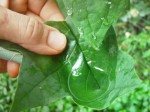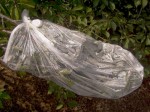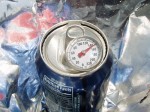Water Purification Using Household Chemicals
There are common chemicals in your household that can be used to chemically treat water for safe drinking. Although they may be distasteful to your palate, it beats the dangers of bacteria and other microscopic organisms.
Chlorine Treatment
4 drops bleach per quart or liter container of water
8 drops bleach per 2-quart, 2-liter, or ½ gallon container of water
16 drops bleach, or 1/4 teaspoon, per gallon or 4-liter container of water
Iodine Treatment
Relatively Clear Water – Use 4 drops of iodine per quart of water or 16 drops per gallon.
Cloudy Water – Double amounts above
Potassium Permanganate Treatment
Add 3 or 4 crystals per liter of water (or until the water stains a light pink) and leave for 30 minutes.










Try Solar pastuerization using the SODIS technique…place up to 2 liters of water in a clear 2 liter plastic bottle and place it in the sun for up to 6 hours….done.
http://www.sodis.ch/methode/index_EN
This can be done with clear nalgene bottles
It’s useful.Sorry,I’m not good at English.But I like Surrvival.Water it’s important in our surrvival and we can’t survive without it.So,we should learn more skills about find water.
One place that you can check would be on the internet.
Keep this information used in the comparison of clean water at home.
At first half of the 20th Century, there was more death from microorganisms
elements such as cholera in water.
These days, it is easy and cheap to buy flexible 10+ watt solar panels. It is also cheap to buy high power ultra violet LEDs.
With this and a cheap battery one can build a portable sun or battery powered UV sterilizer that is fast and kills 100% of all bacteria and microbes. A large volume of water can be treated in extreme short time using a very basic setup.